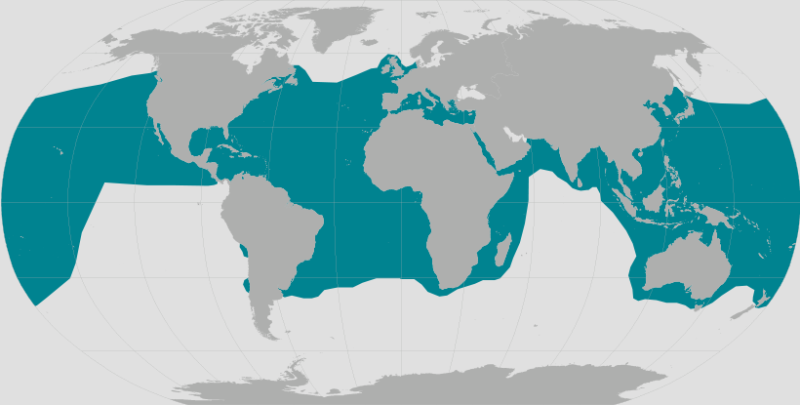
With their powerful jaws, large heads, and long ocean journeys, loggerhead sea turtles are one of the most recognizable and widespread sea turtle species in the world. Found in oceans across the globe, these resilient reptiles play a vital role in marine ecosystems, from helping balance food webs to transporting nutrients between habitats. Despite their strength and adaptability, loggerheads face a wide range of threats—from coastal development to bycatch in fishing gear. In this post, we’ll explore what makes loggerhead sea turtles so unique, where they live, what they eat, and why their protection is more important than ever.
Appearance
Loggerhead sea turtles are named for their large, block-like heads, which house powerful jaws used to crush hard-shelled prey such as crabs and mollusks (FWC). Adult loggerheads typically measure between 2.4 and 3.5 feet in length and weigh anywhere from 155 to 412 pounds, with an average adult weight around 275 pounds (FWC). Their top shell, or carapace, is slightly heart-shaped and ranges from reddish-brown to dull brown, while the plastron (bottom shell) is pale yellow to creamy in color (NOAA Fisheries; FWC). The neck and flippers are usually dull brown to reddish-brown on the top and pale yellow on the underside, and each flipper typically has two claws (NOAA Fisheries; FWC).
Their carapace features 11 to 12 marginal scutes along the edges, five coastal scutes on each side, five central vertebral scutes, and one nuchal scute at the front (NMFS and USFWS 2008). Hatchlings are mostly dark brown with lighter margins on their flippers and a yellowish to tan plastron (NOAA Fisheries). These distinguishing features help identify loggerheads in the wild and reflect their adaptation to a life in the open ocean.

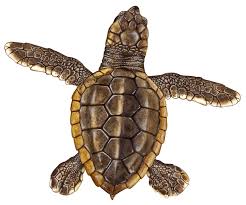
Behavior
Loggerhead sea turtles exhibit a complex life history that includes long migrations, shifting habitats, and powerful feeding behavior. As hatchlings and juveniles, loggerheads spend their first 7 to 15 years drifting in the open ocean, where they grow and develop in relative safety (NOAA Fisheries). Once they reach a certain size, they migrate to nearshore coastal areas, where they forage for food and continue growing for another decade or more before reaching sexual maturity. Their powerful jaws allow them to crush and consume hard-shelled prey like clams and crabs, making armored invertebrates a key part of their diet (FWC).
Despite being relatively slow swimmers, loggerheads are capable of traveling great distances with remarkable endurance. One turtle tagged in Melbourne Beach, Florida, was tracked swimming 400 miles to Cuba in just 11 days (FWC). Adult loggerheads can migrate hundreds to thousands of miles between their feeding and nesting grounds. In the Pacific, satellite tracking has revealed that hatchlings from Japan and Australia can migrate across the ocean—up to 8,000 miles—to foraging grounds off the coasts of Mexico, Peru, and Chile. They may spend up to 20 years maturing before returning to the very beaches where they hatched to nest and complete the cycle of life (NOAA Fisheries).
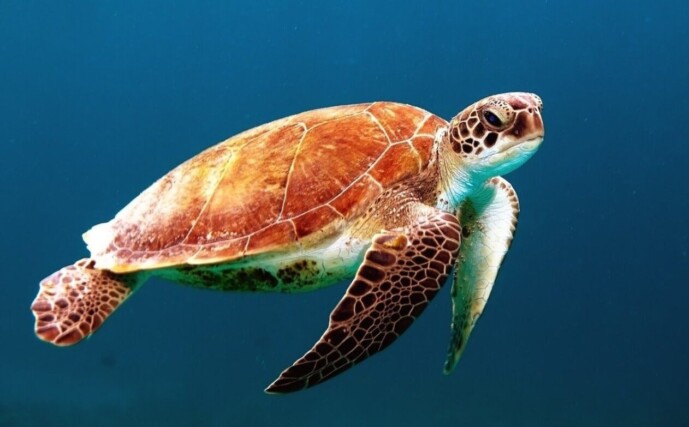
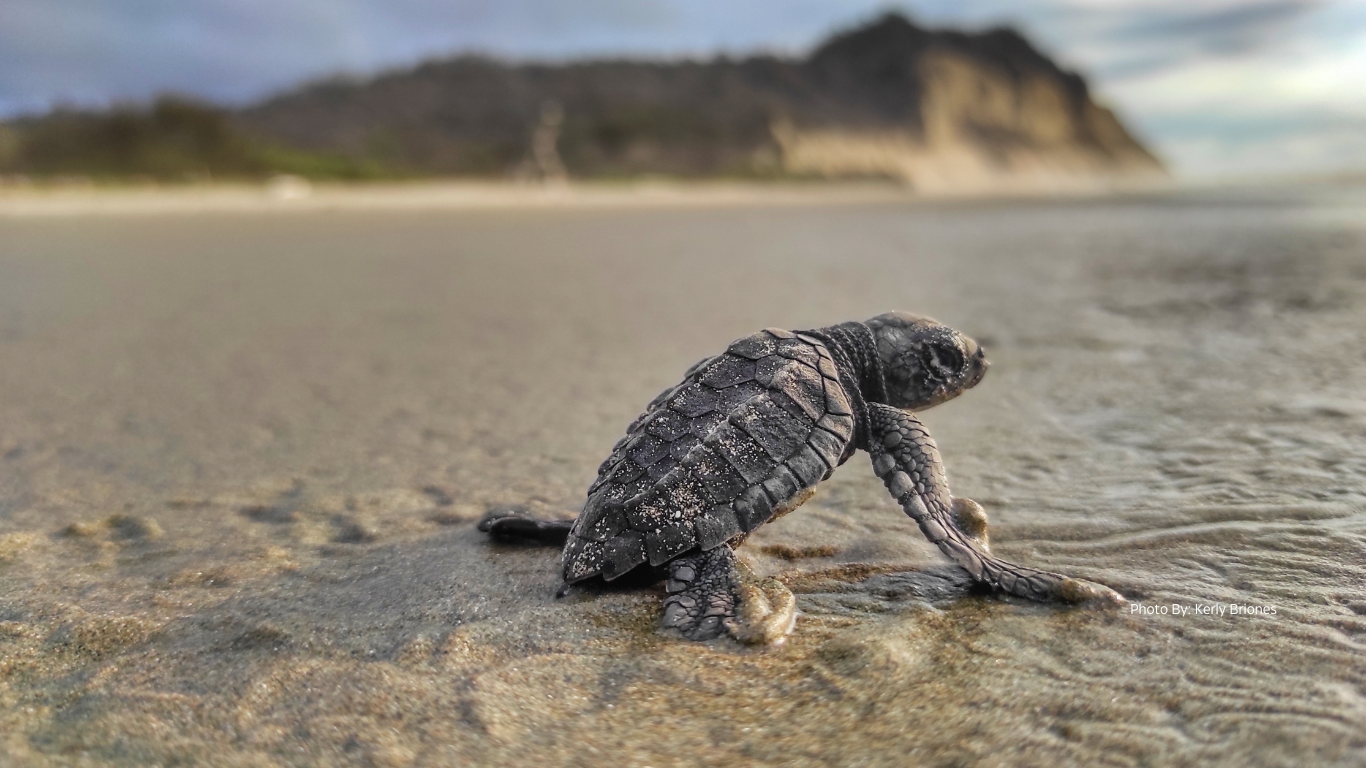
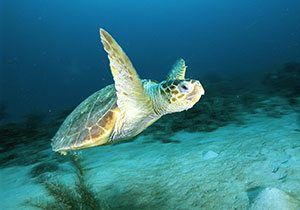
Diet
Loggerhead sea turtles are carnivorous throughout their lives, with their diet evolving as they grow and shift habitats. Hatchlings begin by feeding on small animals found in seagrass mats along ocean drift lines and eddies (Texas Parks & Wildlife). During their open ocean phase, juveniles consume a wide variety of floating prey, including jellyfish, pteropods, floating mollusks, egg clusters, squids, and even flying fish (Texas Parks & Wildlife; FWC). Unfortunately, this surface-feeding behavior also puts them at risk of ingesting marine debris, especially small plastic fragments that resemble prey items (NOAA Fisheries).
As loggerheads mature and transition to coastal environments, their diet shifts to primarily bottom-dwelling invertebrates. Juveniles and adults feed on mollusks, crabs, horseshoe crabs, shrimps, sea urchins, and occasionally fish or sponges (NOAA Fisheries; Texas Parks & Wildlife). Their large, powerful jaws are specially adapted to crush the hard shells of these armored prey, making them effective benthic foragers. While plant material may occasionally be consumed, loggerheads are true carnivores, relying heavily on the availability of marine animals throughout all life stages (NOAA Fisheries).


Range/Distribution
Loggerhead sea turtles have one of the broadest geographic ranges of any sea turtle species, inhabiting subtropical and temperate waters worldwide. They are found throughout the Atlantic, Pacific, and Indian Oceans, as well as the Mediterranean Sea and Gulf of Mexico (NOAA Fisheries; MOTE Marine Lab). In the Atlantic Ocean, their range stretches from Newfoundland, Canada, all the way down to Argentina, while in the eastern Pacific, they have been reported as far north as Alaska and as far south as Chile (NOAA Fisheries).
Loggerheads are highly adaptable and capable of living in various environments, including brackish waters, coastal lagoons, river mouths, and open ocean habitats where temperatures are typically above 50°F (Texas Parks & Wildlife). In the United States, the major nesting beaches are found along the southeastern coast, particularly in Florida, Georgia, South Carolina, and North Carolina. While Texas has occasional sightings and minor nesting activity along its Gulf coast, large-scale nesting is less common there (Texas Parks & Wildlife). This wide range of habitats highlights the loggerhead’s ability to thrive across diverse marine environments, making its global protection a critical conservation priority.
Lifespan/Reproduction
Loggerhead sea turtles have long lifespans and delayed reproductive maturity, contributing to the species’ vulnerability. These turtles can live up to 80 years or more, but they do not reach sexual maturity until about 20 to 35 years of age(NOAA Fisheries; SWOT). Once mature, females return every 2 to 4 years to the region where they hatched—often navigating thousands of miles to reach their natal beaches (NOAA Fisheries).
Mating occurs from late March to early June in the northern hemisphere, followed by nesting between late April and early September. Loggerheads are solitary and nest at night, typically choosing steeply sloped, coarse-grained beachesexposed to strong wave energy (NOAA Fisheries). During a nesting season, a female may lay 2 to 5 clutches of eggs, spaced about two weeks apart. Each nest contains between 80 and 120 eggs, which are about the size of ping pong balls and weigh roughly 30–40 grams (SWOT). The eggs incubate for about 60 days before hatching.
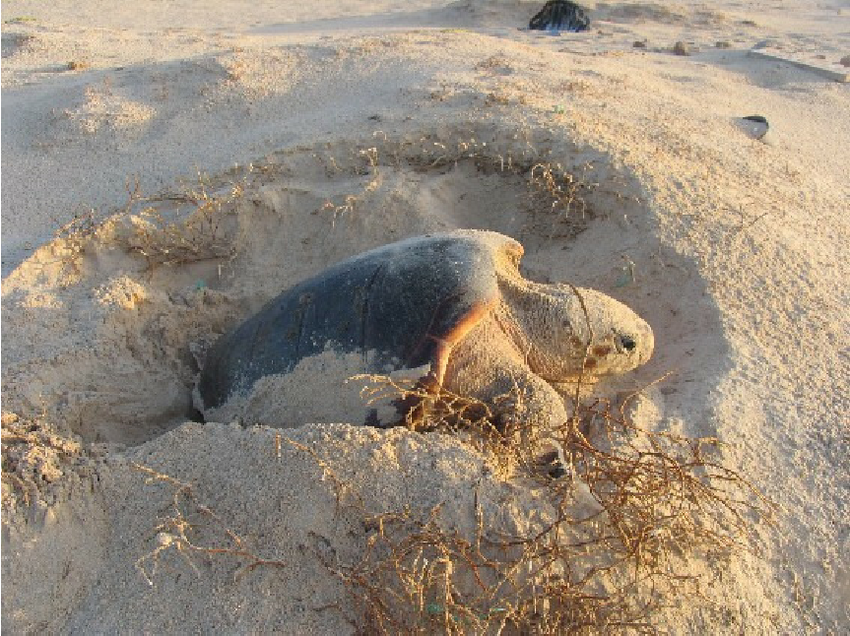
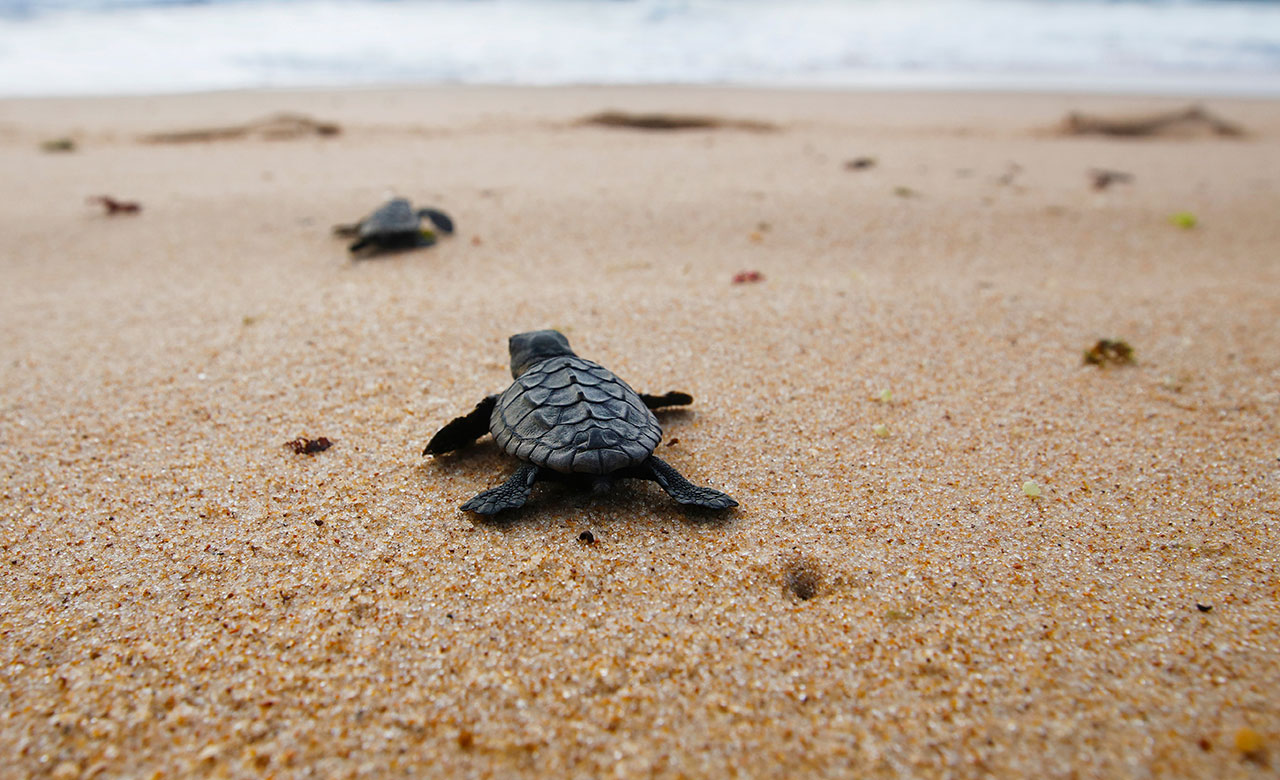
Threats
Loggerhead sea turtles face a variety of threats both in the ocean and on nesting beaches. One of the most serious is bycatch, where turtles are unintentionally caught in fishing gear like trawls, longlines, and gillnets, often leading to drowning or injury (NOAA Fisheries). Vessel strikes in coastal areas are also increasing, especially during nesting season when turtles are nearshore.
On land, coastal development and beach armoring reduce suitable nesting habitat, while artificial lighting can disorient hatchlings and nesting females (FWC; NOAA Fisheries). Predators such as raccoons and feral hogs also threaten eggs and hatchlings. In some areas, illegal harvesting of turtles and eggs continues despite protections.
Loggerheads are further endangered by marine debris, which they can mistake for food, and by climate change, which affects nesting success, hatchling sex ratios, and habitat conditions (NOAA Fisheries). Together, these threats underscore the importance of global conservation efforts.
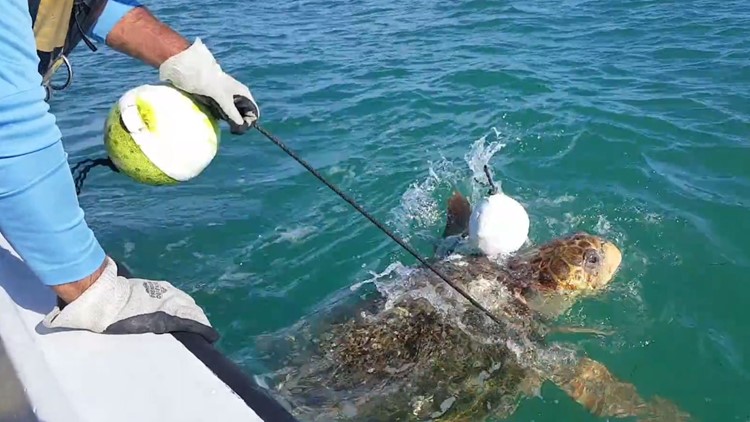
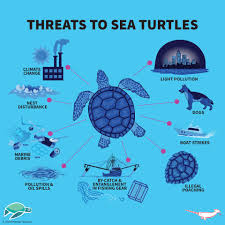

From their long migrations to their essential role in ocean ecosystems, loggerhead sea turtles are truly remarkable creatures. As they face growing challenges from human activity, pollution, and climate change, it’s more important than ever to understand their behavior, protect their habitats, and support conservation efforts. By learning more about loggerheads and sharing their story, we can all play a part in ensuring these incredible turtles continue to thrive in our oceans for generations to come.

